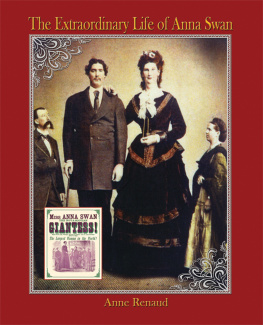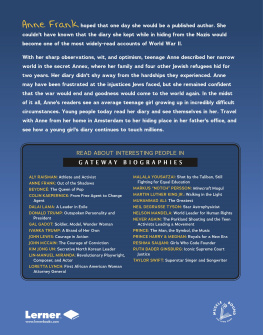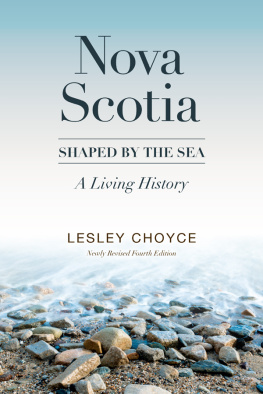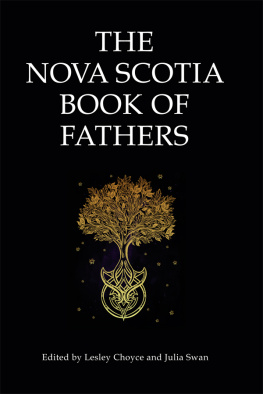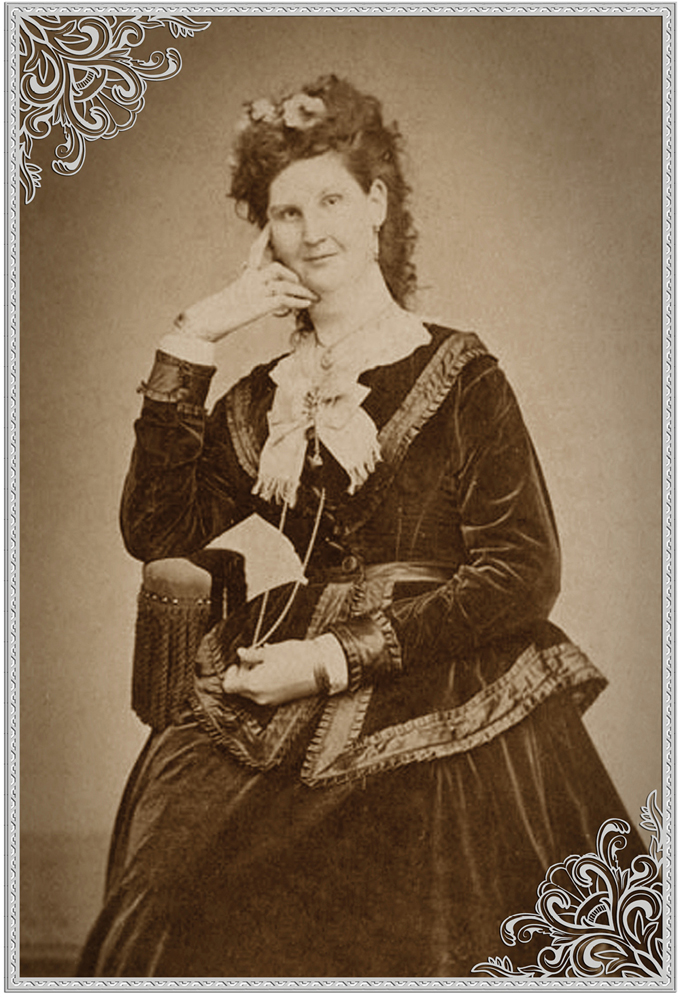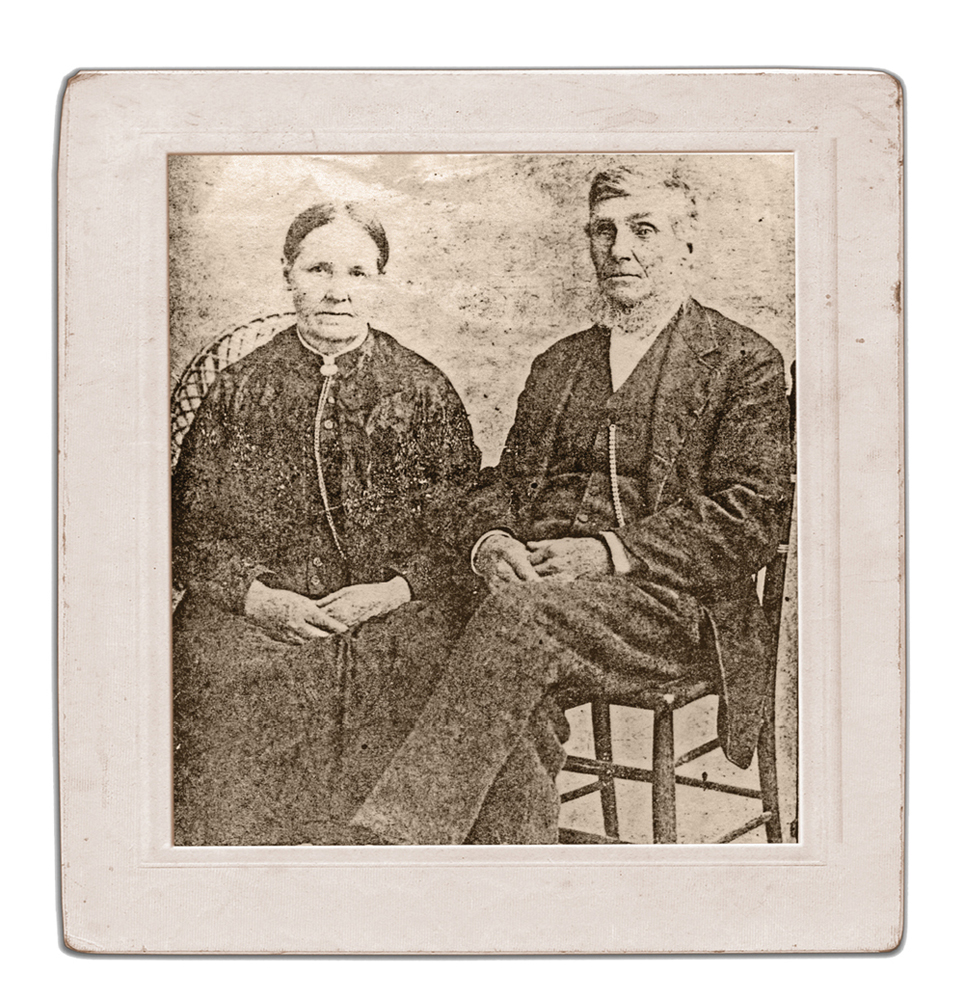The Extraordinary Life
of Anna Swan
The Extraordinary Life
of Anna Swan
Anne Renaud

CAPE BRETON UNIVERSITY PRESS
SYDNEY, NOVA SCOTIA
Copyright 2013, Anne Renaud
All rights reserved. No part of this work may be reproduced or used in any form or by any means, electronic or mechanical, including photocopying, recording or any information storage or retrieval system, without the prior written permission of the publisher. Cape Breton University Press recognizes fair use exceptions under Access Copyright. Responsibility for the research and permissions obtained for this publication rests with the author.
Cape Breton University Press recognizes the support of Canada Council for the Arts and of the Province of Nova Scotia, through the Department of Communities, Culture and Heritage. We are pleased to work in partnership with these bodies to develop and promote our cultural resources.


Cover Images: Front, Anna and Martin, courtesy of the Creamery Square Heritage Centre, poster insert see page 24; back, see page 30; title page, Anna Swan, courtesy of Laddy Kite.
Cover design: Gail Jones, Sydney, NS
Layout: Gail Jones, Sydney, NS
First printed in Canada
eBook development: WildElement.ca

Library and Archives Canada Cataloguing in Publication
Renaud, Anne, 1957-
The extraordinary life of Anna Swan / Anne Renaud.
Includes bibliographical references and index.
ISBN 978-1-897009-99-4
E-pub 978-1-927492-37-6
Mobi 978-1-927492-38-3
1. Swan, Anna, 1846-1888--Juvenile literature. 2. Giants--
Nova Scotia--Biography--Juvenile literature. I. Title.
GN69.22.S9R45 2013 j599.949 C2013-901291-5
Cape Breton University Press
PO Box 5300
Sydney, NS B1P 6L2
Canada

Table of Contents

Introduction
D id you hear?
Can it be?
Who would have thought... ?
Across the rolling, green hills of Colchester County, news travelled fast throughout the farming community of Millbrook, Nova Scotia.
The year was 1846, and on the balmy morning of August 6, a child had been born to Ann and Alexander Swan in the couples small wood cabin. This in itself was not odd, as home was where babies were most often born in the mid-nineteenth century. What was surprising, however, was that the baby girl weighed in at a hefty 6 kilograms (13 pounds) almost twice the size of an average newborn!
Her parents named her Anna, and she would grow to an astonishing size. However, despite the challenges of her physical attributes, Anna Swans life unfolded as a rich and happy one, gifted with fame, wealth, world travel and, most notably, true love. This is her remarkable story.
Chapter 1

Early Years
A nna Swan thrived in her familys caring and loving farmhouse, and her childhood was joyful. At times, her parents certainly found life with Anna to be a challenge. This was not because of bad behaviour, but rather for her surprisingly rapid growth.
While still a baby, Anna outgrew her cradle, and her father had to build her a bed. But in no time it had to be lengthened, then lengthened again. Annas mattress and pillows, which were made of cotton fabric stuffed with straw and feathers from chickens and geese, were re-sized and re-stuffed so she could sleep comfortably. As for her clothing, Annas mother could barely keep up with knitting and sewing clothes for her young daughter. Even Annas shoes, which she outgrew at lightning pace, had little wear before the shoemaker had to make her a bigger pair.
At four years old, Anna already stood at 1.4 metres (4 feet 6 inches)!
Annas parents were of average height, as were all the other Swan children. These included the two children born before Anna, who had sadly died in infancy, as well as the ten more children who would follow over the years. This made Annas size all the more unusual.
When Anna was still a young child, her family moved from Millbrook to a new farmhouse in nearby New Annan, and though this wooden cabin was more comfortable than their previous home, life on the farm was still rugged. With no indoor plumbing, and outhouses were used for toilets, and water for cooking and bathing was drawn from an outdoor well.
Annas parents home. Photo courtesy of the Creamery Square Heritage Centre.
Annas parents toiled from early morning until dusk milking cows, feeding chickens, ploughing fields, weeding vegetable gardens and cutting and raking hay to provide for the familys needs. All the while Anna spent her days content, helping her parents with small household chores and playing with her dolls and younger siblings. As Anna grew in size, so did the Swan family, with the arrival of more babies.
In time, the curious and the nosy began making their way to the Swan farmhouse to catch a glimpse of the pink-cheeked girl who towered over her sisters and brothers, for Anna did indeed appear much older than her age.
Annas parents. Photo courtesy of the Creamery Square Heritage Centre.
This was the assumption once made by a stranger who came to the Swan farm to buy some cattle. Upon witnessing four-year-old Anna sitting on the floor playing with her dolls, the man concluded she was a grown woman and therefore had to be a a rather cruel expression .
Annas father was quick to set the stranger straight on this account and, to ensure there were no hard feelings, invited the man to have dinner with the Swan family. It was during the course of this meal that the stranger convinced Annas parents that people would be willing to pay money to see their child, and they should show her off in cities and towns across Nova Scotia.
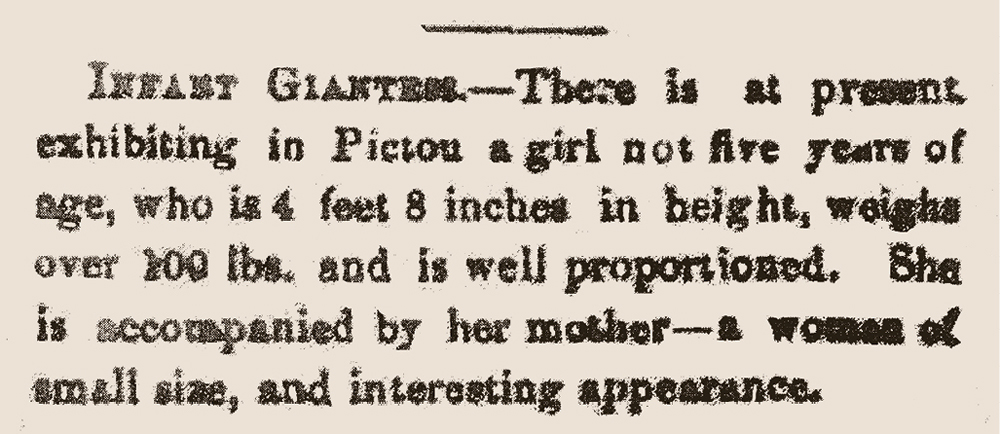
The Nova Scotian , July 14, 1851.
As a result, in March 1851, Annas parents brought their four-and-a-half-year-old daughter to Halifax, where she was put on exhibition. Anna was a popular attraction and crowds of people were eager to pay to see the Infant Giantess who was rosy as a milkmaid, weighed more than 42 kilograms (94 pounds) and already had arms and wrists as large as a full-grown man, as she was described in a local newspaper. This first appearance led to several others, with Anna and her parents travelling from town to town for small county fairs, where she could be featured. Annas parents welcomed the extra money that these appearances generated, as it supplemented their meagre income as farmers. However, they always made sure Anna was well cared for and the touring was not too tiring for her.

